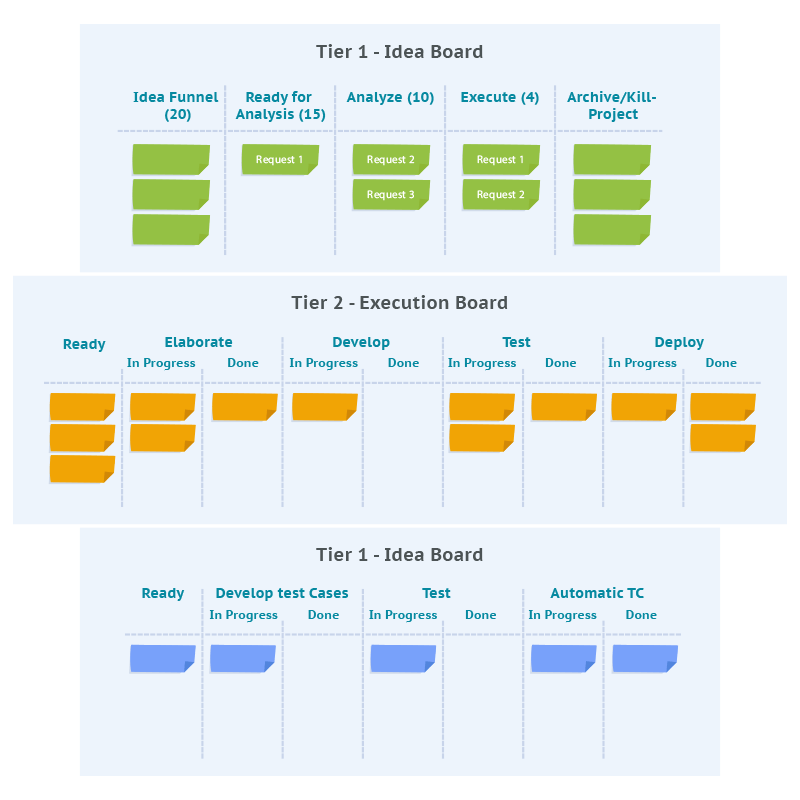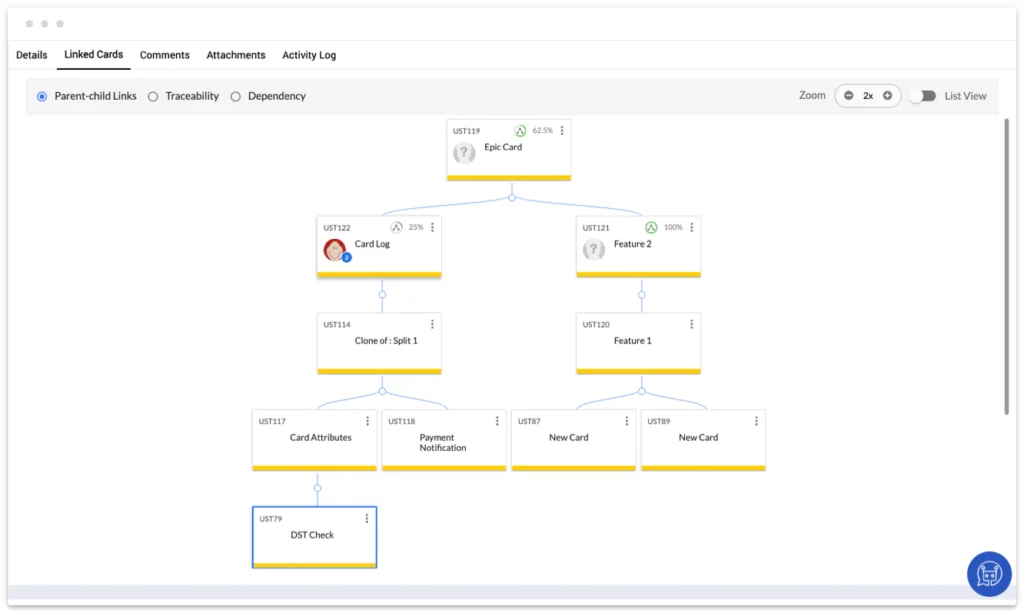Portfolio Kanban

Kanban 101
Portfolio Kanban: Powerful Visual Portfolio Management
Kanban’s Value to Portfolio Management
Portfolio Visualization: The fundamental purpose of Portfolio Management is to understand the status of the projects or activities in a portfolio at any level and to understand the overall status at the highest level. Kanban’s visual nature makes it very easy and intuitive to model and view Kanban boards at different levels – and get the status of initiatives, projects and the task at a glance! Given the flexibility of modeling Kanban boards, especially for ‘upstream’ and downstream work stages, it is also easy to visualize what the pipeline of incoming projects (the demand) might be – in order to make informed decisions on funding and other outcomes. The Kanban value stream is the most visual tool for modeling the “funnel” through which the projects flow.
Swim-Lanes to segregate and depict one or more portfolios levels: You can use a single Kanban board or multiple boards to model a portfolio. In a single Kanban Board, you can organize different levels of the portfolio in multiple swim-lanes for tracking each Portfolio or each project/ activity within one Portfolio. So, depending on your comfort level handling multiple boards, and especially if you are using a physical Kanban board, you can choose to use a single or multiple Kanban boards to define your overall portfolio.
Focus on Flow with Pull, WIP Limits and Explicit Policies: Organizations have limited resources; so they can take on a limited set of activities – be it projects or ad campaigns or recruitment drives. Thus at each stage of the project/ activity funnel, they can only have a limited number of those projects in order to optimally manage with their resources.
It is therefore crucial that these projects, campaigns, and initiatives be done at optimal flow levels and completed so that additional activity can be undertaken across the enterprise. Flow is of paramount importance to use business-critical resources optimally and accomplish work based on senior management’s strategic priorities.
Kanban, of course, provides a broad set of tools for managing and improving flow. Pull, WIP Limits and explicit policies serve as an ideal toolset to model organizational constraints, encourage managers and teams to complete projects at hand – and then take on more projects/ work!
SwiftKanban’s Support for Portfolio Kanban
SwiftKanban provides you various powerful capabilities to set up and visually manage your portfolios. These include features such as Portfolio-type Swim Lanes, flexible, multi-board Card Hierarchy, automated progress-status roll-up based on user-configurable roll-up logic, visual indicators of progress at parent card level, and much more!
Depending on your needs, you can model in several different ways. Learn all about SwiftKanban’s Portfolio Kanban features and see for yourself!
To learn more about SwiftKanban, please take a look at the SwiftKanban features. Or, to give it a try, please signup for a 30-day Free Trial!
Visualize your workflow and manage your work in an Easy and Intuitive way.
Try our Enterprise Plan FREE for 30 days.






